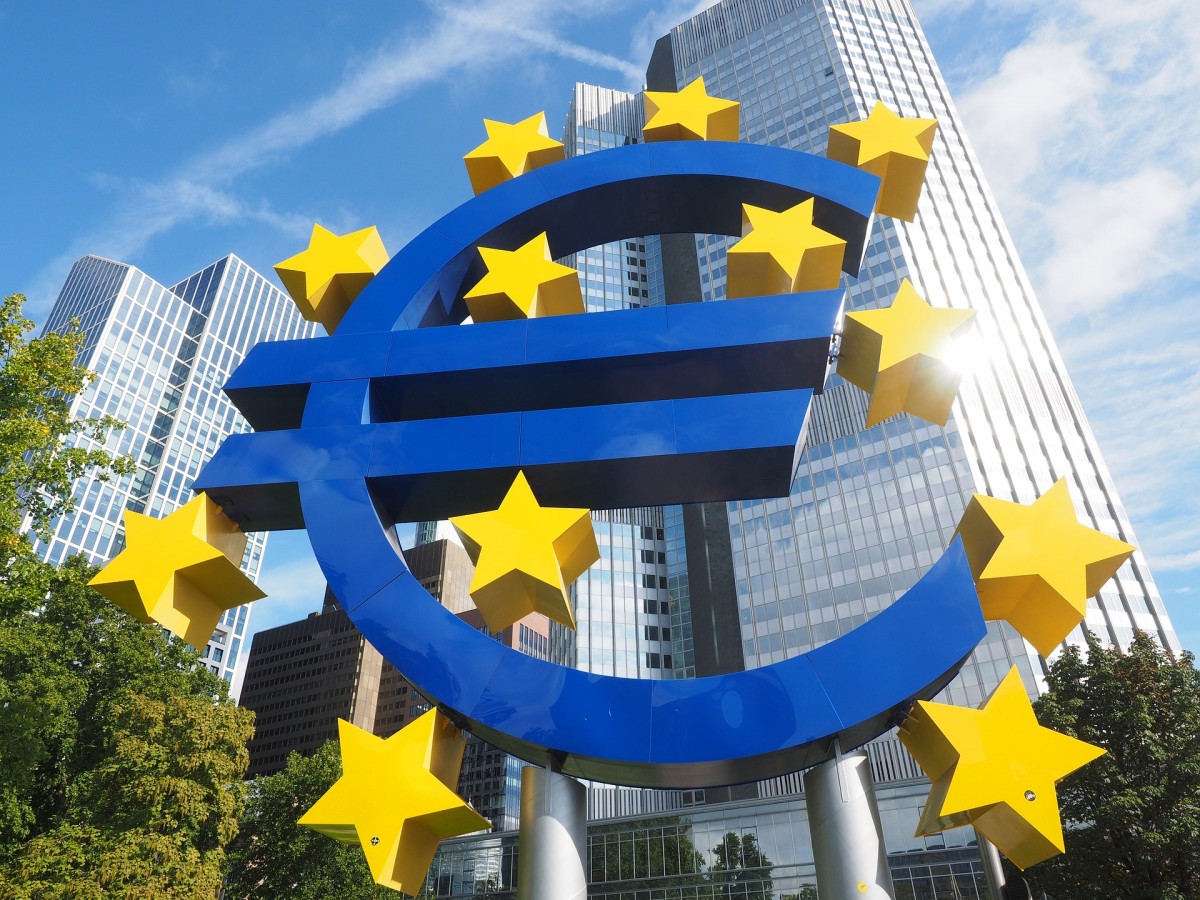- Current account surplus at €337 billion (2.9% of euro area GDP) in four quarters to second quarter of 2021, up from €200 billion (1.7% of GDP) a year earlier
- Geographic counterparts: largest bilateral current account surpluses vis-à-vis United Kingdom (€176 billion) and United States (€74 billion), largest deficit vis-à-vis China (€66 billion)
- International investment position showed net liabilities of €576 billion (4.9% of euro area GDP) at end of second quarter of 2021
Current account
The current account surplus of theeuro area increased to €337 billion (2.9% of euro area GDP) in the four quarters to the second quarter of 2021, up from €200 billion (1.7% of GDP) a year earlier (see Table 1). This increase reflected a shift in the services balance from a deficit of €23 billion to a surplus of €79 billion and a larger surplus for goods (from €305 billion to €385 billion). These developments were partly offset by a decrease in the surplus for primary income (from €71 billion to €42 billion) and a larger deficit for secondary income (from €153 billion to €169 billion).
The developments in services were mainly due to a reduction in the deficit for other business services (from €163 billion to €38 billion) and, to a lesser extent, an increase in the surplus for telecommunication, computer and information services (from €95 billion to €113 billion). Conversely, a lower surplus was recorded for travel services (from €28 billion to €9 billion), while the deficit for other services increased (from €14 billion to €32 billion).
The decrease in the primary income surplus was mainly due to a fall in the surplus for investment income (from €43 billion to €14 billion). This primarily reflected a lower surplus for direct investment income (down from €73 billion to €20 billion), which was partly offset by a smaller deficit for portfolio equity income (down from €85 billion to €65 billion) and a larger surplus for portfolio debt income (up from €40 billion to €45 billion).

Data for the current account of the euro area
Data on the geographic counterparts of the euro area current account (see Chart 1) show that in the four quarters to the second quarter of 2021 the euro area recorded its largest bilateral surpluses vis-à-vis the United Kingdom (€176 billion, slightly up from €172 billion a year earlier), the United States (€74 billion, down from €99 billion) and Switzerland (€65 billion, up from €62 billion). It also recorded a current account surplus vis-à-vis a residual group of other countries (€179 billion, up from €155 billion). The largest bilateral deficits were recorded vis-à-vis China (€66 billion, down from €79 billion) and EU Member States and EU institutions outside the euro area (€59 billion, up from €28 billion).
The most significant geographic changes in the four quarters to the second quarter of 2021 relative to the previous year were as follows. In the goods balance there were increases in the surpluses vis-à-vis the United States (from €157 billion to €183 billion) and the residual group of other countries (from €47 billion to €74 billion). In services the deficit vis-à-vis offshore centres declined strongly (from €160 billion to €15 billion), while the deficit vis-à-vis the United States increased (from €43 billion to €100 billion). In primary income, a larger deficit was recorded vis-à-vis offshore centres (up from €43 billion to €54 billion), while in secondary income the deficit vis-à-vis the EU Member States and EU institutions outside the euro area widened from €88 billion to €104 billion driven by euro area governments’ contributions to the EU budget.

Data for the geographical breakdown of the euro area current account
International investment position
At the end of the second quarter of 2021 the international investment position of the euro area recorded net liabilities of €576 billion vis-à-vis the rest of the world (4.9% of euro area GDP), decreasing from €649 billion in the previous quarter (see Chart 2 and Table 2).

Data for the net international investment position of the euro area
This decline in net liabilities of €73 billion reflected large but partly offsetting changes in the various investment components. Larger net assets were recorded for portfolio debt (€1,066 billion, up from €862 billion), while net assets declined in direct investment (€1,883 billion, down from €1,900 billion). Net liabilities increased in portfolio equity (€3,198 billion, up from €3,103 billion) and other investment (€1,082 billion, up from €1,035 billion).

Data for the international investment position of the euro area
The developments in the euro area’s net international investment position in the second quarter of 2021 were mainly driven by positive net flows owing to transactions and price changes, which were partly offset by negative net other volume changes (see Table 2 and Chart 3).
Theincrease in net assets for portfolio debt was mainly due to positive net flows in transactions and price changes (see Table 2). Larger net liabilities for portfolio equity and other investment were primarily driven by negative net transactions and other volume changes, while the decline in net assets for direct investment was mainly attributable to negative net other volume changes.
At the end of the second quarter of 2021 the gross external debt of the euro area amounted to €15.4 trillion (around 130% of euro area GDP), down by €97 billion compared with the previous quarter.

Data for changes in the net international investment position of the euro area
Data revisions
This statistical release incorporates revisions to data for the reference periods between the first quarter of 2017 and the first quarter of 2021. The revisions reflect revised national contributions to the euro area aggregates as a result of the incorporation of newly available information. In particular, data on portfolio investment equity liabilities were revised upwards significantly owing to a methodological change in the data compilation negatively affecting the euro area net international investment position as of the first quarter of 2017.
ecb.europa.eu










